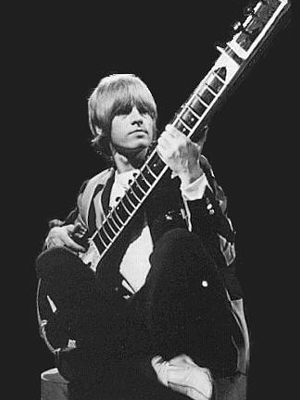Brian Jones plucked the haunting sitar melody at the 1966 L.A. session for this classic. Bill Wyman added klezmer-flavored organ; studio legend Jack Nitzsche played the gypsy-style piano. “Brian had pretty much given up on the guitar by then,” said Richards. “If there was [another] instrument around, he had to be able to get something out of it. It gave the Stones on record a lot of different textures.”
~rollingstone.comThe principal riff of “Paint It Black” (almost all classic Rolling Stones songs are highlighted by a killer riff) was played on a sitar by Brian Jones and qualifies as perhaps the most effective use of the Indian instrument in a rock song. The exotic twang was a perfect match for the dark, mysterious Eastern-Indian melody, which sounded a little like a soundtrack to an Indian movie hijacked into hyperdrive.
~Richie Unterberger (allmusic.com)
Original version:
Wikipedia:
| from the album Aftermath | |
|---|---|
| B-side | “Stupid Girl” (US) “Long Long While” (UK) |
| Released | 7 May 1966 (US) 13 May 1966 (UK) |
| Format | 7″ |
| Recorded | 6–9 March 1966 |
| Genre | Psychedelic rock, raga rock |
| Length | 3:45 (mono single mix) 3:22 (stereo album mix) |
| Label | London 45-LON.901 (US) Decca F.12395 (UK) |
| Writer(s) | Jagger/Richards |
| Producer | Andrew Loog Oldham |
“Paint It, Black” is a song released by The Rolling Stones on 13 May 1966 (7 May 1966 – US) as the first single from the US version of their fourth album Aftermath. It was originally titled “Paint It Black” without a comma. Keith Richards has stated that the comma was added by the record label, Decca.
- At a book signing in Nashville in 2001, Bill Wyman explained that the comma was simply a typographical error that stuck.
- The song was written by Mick Jagger and Keith Richards. Mick Jagger wrote the lyrics and Keith Richards wrote the music.
- Bill Wyman claims in his books that the song was a group effort although it was credited to Jagger/Richards.
- The single reached number one in both the United States and the United Kingdom charts in 1966.
- In 2004 it was ranked number 176 on Rolling Stone magazine’s list of the 500 Greatest Songs of All Time. In the US and UK, it was the first number one single to feature a sitar.
Live version:
Musicians:
- Mick Jagger – lead vocals
- Brian Jones – sitar, percussion
- Keith Richards – electric guitar, acoustic guitar, backing vocals
- Bill Wyman – bass pedals, bass guitar, Hammond B3
- Charlie Watts – drums
- Jack Nitzsche – piano
–
Check out:
- Alldylan.com @ Facebook
- The Rolling Stones: Unsurpassed Masters Vol.2 (25 outtakes)
- The Rolling Stones: Unsurpassed Masters – Volume 1 (1963-1964) (30 outtakes)
- The Rolling Stones – Brussels Affair ’73 (improved sound)
- The Rolling Stones: Live At Leeds 1971 (bootleg)
- Feb 24: The Rolling Stones played Perth, Australia in 1973
- The Rolling Stones: Outtakes and Demos from “Exile on Main St.”
- The Rolling Stones – Montreux Rehearsals (1972)
- The Rolling Stones – Sticky Fingers Sessions (Bootleg)
- Classic Concert: The Rolling Stones Hampton 1981
- April 23: The Rolling Stones released Sticky Fingers in 1971
- April 16: The Rolling Stones – The Rolling Stones [UK] (1964)
- April 11: Bob Dylan & The Rolling Stones – Like A Rolling Stone, Brazil 1998 (Video)
- Muddy Waters and Rolling Stones live at The Checkerboard Lounge 1981
- Classic Documentary: The Rolling Stones Gimme Shelter
-Egil


